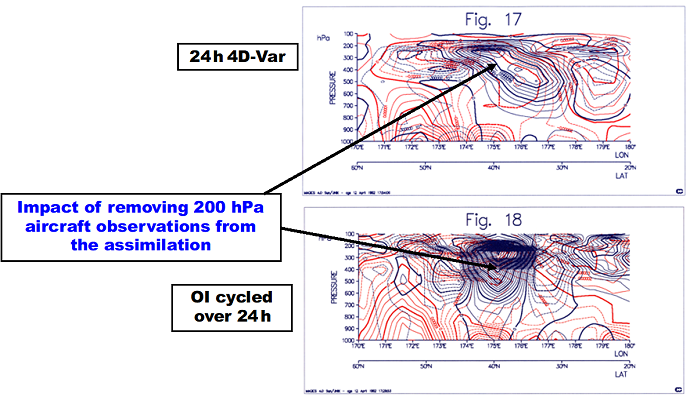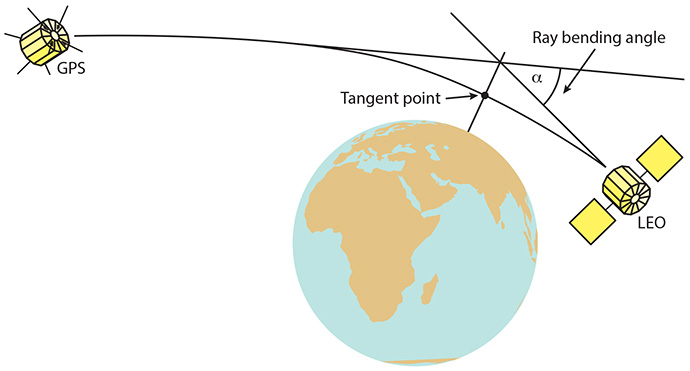

Jean-Noël Thépaut, who started his career at ECMWF in the early 1990s and rose to become the Director of the two EU Copernicus services run at the Centre, is leaving us at the end of this year on reaching retirement age.
It all began when he did maths and physics at a French prep school – equivalent to a university course. “That took me to the meteorological school at Météo-France, and immediately afterwards I started my PhD in France and at ECMWF,” he says.
The PhD project, which finished in 1992, was on a hot topic at the time: 4D-Var data assimilation, a new technique to combine the latest weather observations with a short-range forecast to obtain the best possible estimate of the current state of the Earth system.
That estimate, called the analysis, is used as the initial conditions on which weather forecasts are based. Today, 4D-Var is routinely used to determine the atmospheric analysis.

Jean-Noël managed to convince ECMWF in the early 1990s of the value of 4D-Var, compared with the optimal interpolation (OI) method used at the time, with examples such as this.
“I was lucky because, when I arrived on the scientific market, there was this big vibe about doing variational data assimilation, and I was part of a bunch of PhD candidates who looked at this,” Jean- Noël says.
He went on to become Head of the Data Division and Deputy Director of Research, in charge of satellite data, data assimilation methods and climate reanalysis, and later he became a leading figure in the two Copernicus services run by ECMWF: the Copernicus Climate Change Service (C3S) and more recently the Copernicus Atmosphere Monitoring Service (CAMS).
Early years
After a spell at ECMWF from 1990 to 1994, Jean-Noël worked on implementing 4D-Var at Météo-France before returning to the Centre in 2000.
“An opportunity arrived to become the head of the satellite section at ECMWF, and I went for it,” he says.
There was a big push to use more satellite observations in data assimilation at the time. This included new hyperspectral infrared sounders, and more data over land, sea ice and low clouds. ECMWF also assimilated GPS radio occultation (RO) satellites for the first time in 2006.

GPS satellites orbit Earth at an altitude of about 20,000 km. Signals they send out are received by Low-Earth-Orbit (LEO) satellites, whose orbit is at about 700 to 800 km. When the signals pass through the atmosphere relatively close to the Earth’s surface, they are bent as a result of refraction. The resulting time delay can be measured and corresponds to a bending angle, which in turn provides information on temperature and humidity near the tangent point.
While Jean-Noël was in charge, future satellite observation needs of weather prediction were explored by EUMETSAT.
“I was part of the expert team defining our requirements for 2020+ to plan for satellites yet to be commissioned. This was when the ground was laid for the Metop-Second Generation (SG) satellites, to be launched in 2025 and 2026.”
A move towards reanalysis
In 2008, Jean-Noël became Head of the Data Division, which comprised three sections: the satellite section, data assimilation methods, and climate reanalysis.
The latter concerned early attempts to reconstruct past weather and climate by blending observations with past short-range weather forecasts rerun with modern weather forecasting models. Reanalysis makes it possible to achieve a globally complete view of weather reaching back many decades.
It was the period of the ERA-Interim reanalysis, which began to be produced from 2006 for the period of 1989 onwards. Research projects were also run, such as ERA-CLIM, which looked at the entire 20th century.
In 2013, the EU was planning to launch C3S and CAMS. “The Copernicus Atmosphere Monitoring Service was almost a done deal as ECMWF had been involved in building a pre-operational atmospheric composition service, based on the GEMS and MACC projects,” Jean-Noël says.
“The EU decided to entrust the Copernicus Climate Change Service to ECMWF, too, essentially because of our extensive reanalysis work, our expertise in numerical weather prediction, our operational infrastructure, and our ability to leverage expertise among our Member States.”
ECMWF’s Director-General at the time, Alan Thorpe, asked him to lead the C3S service, which was created in 2014. The first monthly climate values that can be accessed on the C3S website date back to August 2015.

Average surface air temperatures (°C) for August 2015, expressed as the difference from the August average for the period 1981–2010. Source: ERA-Interim. (Credit: Copernicus Climate Change Service/ECMWF)
Copernicus
Jean-Noël had his work cut out when it came to building the Copernicus Climate Change Service. “C3S had to be developed from scratch,” he emphasises. “I didn’t have a free hand but a lot of flexibility to get the service going.”
C3S was declared operational in 2018. Monthly climate bulletins now include surface air temperatures, sea ice, hydrological variables and European surface in-situ monitoring. For the global aspect, they are produced by ERA-Interim’s successor, ERA5, and ERA6 is already in the making.
But climate bulletins form only part of C3S. There is, for example, also a Climate Data Store, which includes a host of climate data of the past, present and future. “In 2020, we were delighted to have some 30,000 users of the Climate Data Store – today we have nearly 300,000.”

In January 2020, Jean-Noël posted on X, formerly known as Twitter: "The @CopernicusECMWF Climate Data Store reaches more than 30,000 registered users in the new year. A testimony to the operational service that we deliver to the climate community. Will we reach 50,000 users by the end of 2020?"
A user support team was built, and several sectoral applications, for example in the fields of energy and water, were introduced. Dedicated action was also taken on Communications and interactions with EU stakeholders.
A big effort was made to involve EU and ECMWF Member States as well as external agencies. “About two thirds of the money we get from the Commission is spent on outsourcing to Member States. We can say that Copernicus is really a community effort.”
An example of external input is provided by seasonal forecasts, which C3S provides from eight sources. They could for example be used to study the likely development of this year’s El Niño event.

Individual SST anomaly forecasts for the NINO3.4 region from June 2023 according to the C3S website. The forecasts are from Italy’s Euro-Mediterranean Center on Climate Change (CMCC), the German Meteorological Service (DWD), Environment and Climate Change Canada (ECCC), ECMWF, the Japan Meteorological Agency (JMA), the UK Met Office, Météo-France and the US National Centers for Environmental Prediction (NCEP).
In 2019, Jean-Noël became the Director of Copernicus at ECMWF, including both C3S and CAMS. That involved close contact with the European Commission to make sure both services were delivered in line with expectations.
CAMS also receives a lot of contributions from outside the Centre, while ECMWF is in charge of providing global monitoring and forecasting of atmospheric composition products and services. “Both C3S and CAMS can be regarded as a collective venture,” Jean-Noël says.
His lasting impact is to have led the services to a prominent role in world reporting on climate and atmospheric composition.
“I’m particularly glad about the increased visibility of C3S and CAMS, including in the media,” he says. “For me, that’s a measure of success.”
